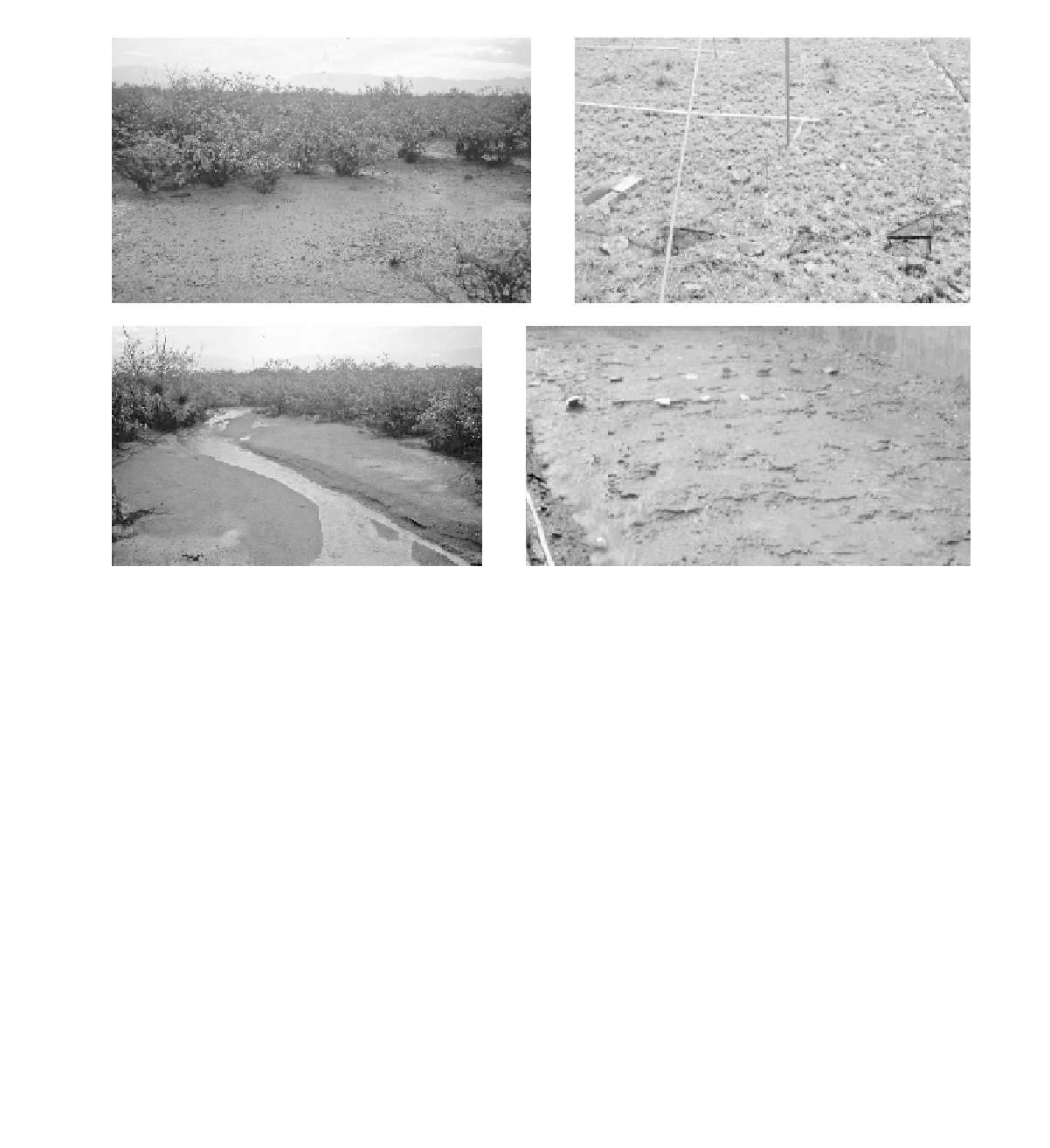Geoscience Reference
In-Depth Information
(a)
(b)
(c)
(d)
Figure 11.2
Overland flows showing the discontinuous nature of flow and the presence of flow threads: (a) following a storm
event at Jornada LTER site, New Mexico; (b) during a rainfall-simulation event on a desert grassland at Walnut Gulch, Arizona
(see Parsons
et al.
, 1997); (c) concentrated rill flows at Jornada LTER site, New Mexico; and (d) flow threads and rills developed
on an initially smooth experimental slope at Long Ashton, Bristol, in experiments investigating the movement of archaeological
materials on slopes.
topography, soils, rainfall characteristics and vegetation
(Dunne and Black, 1970; Dunne, Moore and Taylor,
1975).
Recently, the different conceptual models of runoff pro-
duction have been the focus of critique, with calls for a
new theory of runoff generation (e.g. McDonnell, 2003;
Ambroise, 2004; Bracken and Croke, 2007). Hydrological
connectivity is one possible concept of runoff generation
and flood production that could provide a way forward, but
currently there is much confusion in the literature about
how the term is used and how it relates to existing re-
search. There has been considerable research on aspects
of hydrological 'connectivity', although not always re-
ferred to as such, including runoff generation at the patch,
hillslope and catchment scales, which makes it difficult
to draw work together into a single theoretical model of
runoff connectivity (e.g. Fitzjohn, Ternan and Williams,
1998; Cammeraat and Imeson, 1999; Ludwig, Wiens and
Tongway, 2000). A consistent definition of the term, how-
ever, remains difficult to discern from published studies
Once formed, runoff on dryland slopes may be highly
discontinuous because of spatial and temporal variability
in precipitation and because of spatial variability in sur-
face properties. Reinfiltration of runoff is usually called
runon on hillslopes, although once in concentrated flows
in rills or gullies, the channel-based term of transmis-
sion loss is more generally used. Again, this distinction
is more one of terminology rather than reality, and there
is essentially a continuum between the two. Similarly,
the hydraulics of overland flows was characterised in the
early literature as either sheetflow (Horton, 1945) or rill
flow. Since Emmett (1970) challenged the realism of un-
concentrated flows as occurring as continuous 'sheets'
and numerous studies since (e.g. Abrahams, Parsons and
Luk, 1989; Huang, 1990; Baird, Thornes and Watts, 1992;
Dunkerley, 2004; Parsons and Wainwright, 2006) have
emphasised the lateral variability of such flows into dis-
tinct threads of faster and slower flows (Figure 11.2), it
is disappointing that the use of the term still persists.
While there may be a continuum in form between flow

